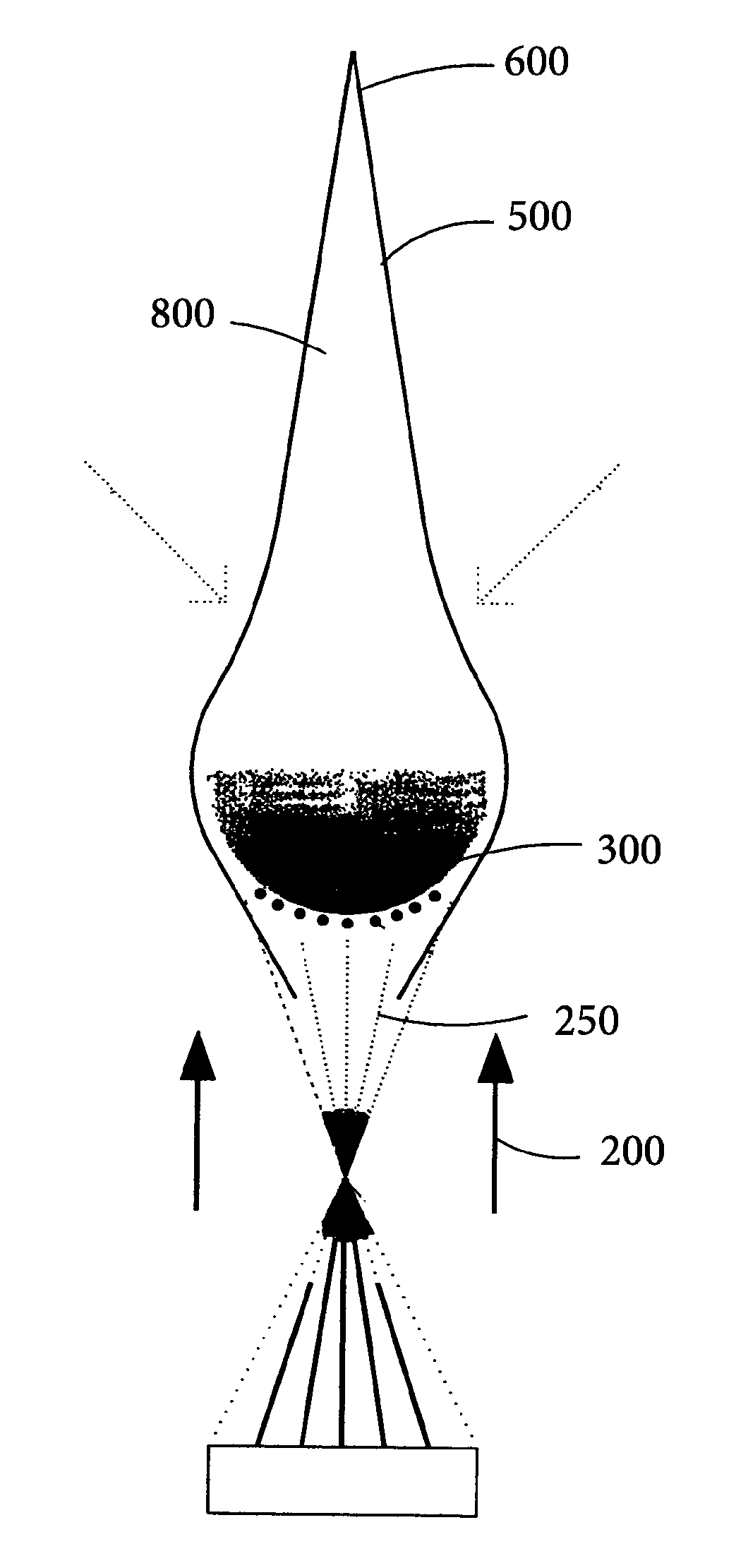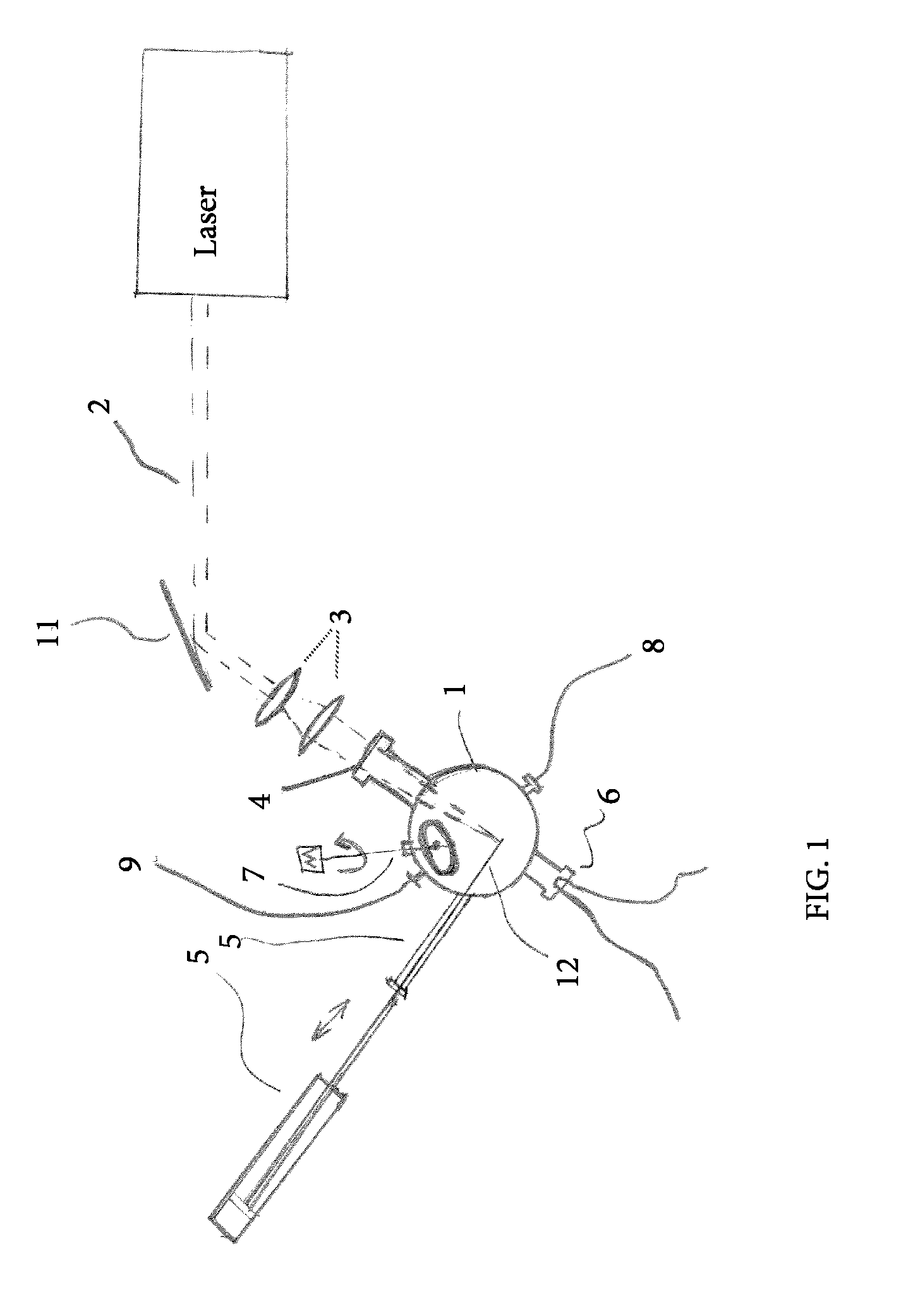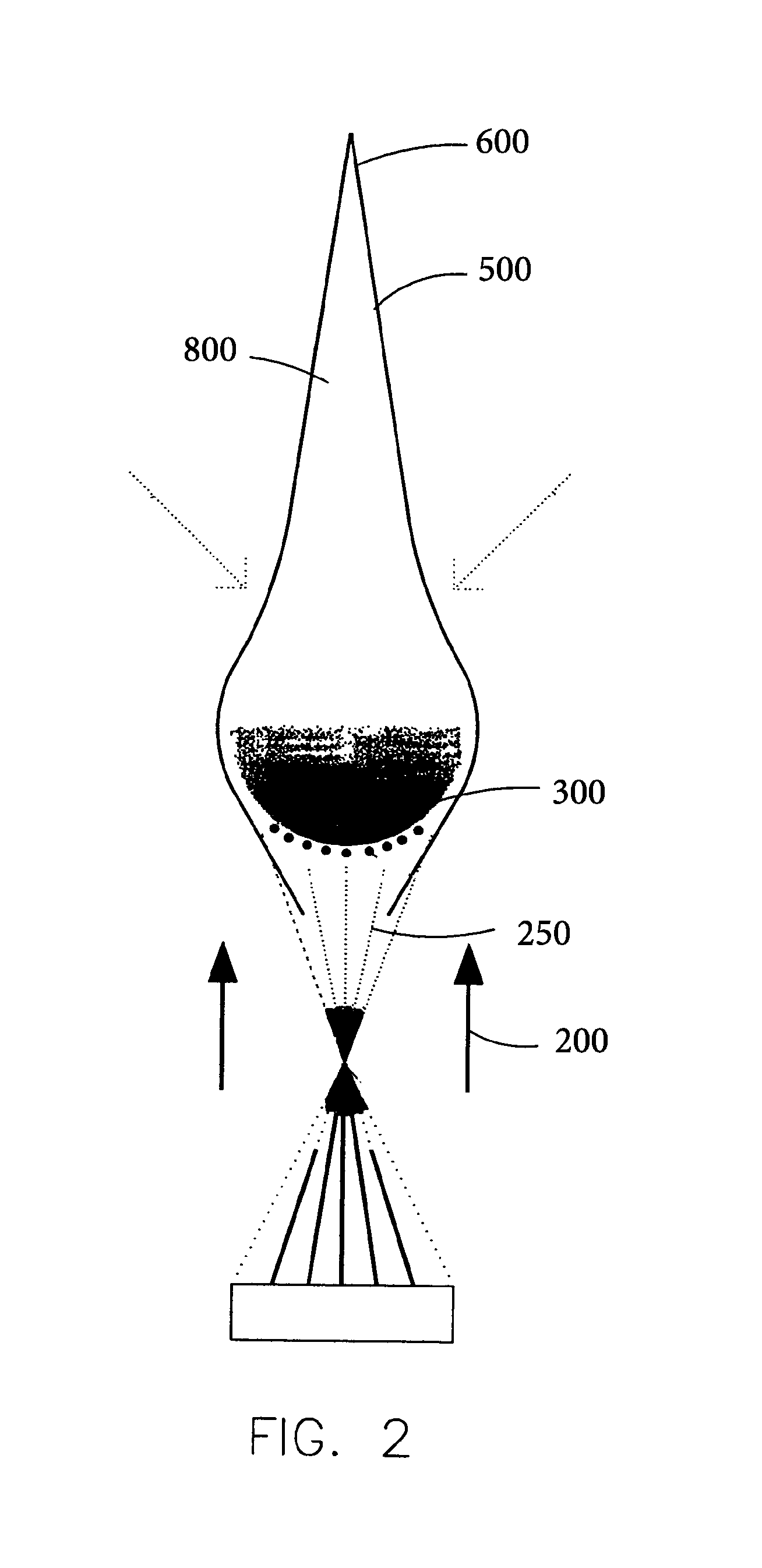Magnesium doping of boron nitride nanotubes
a boron nitride nanotube and magnetism technology, applied in the direction of superconductor details, superconductor devices, energy-based chemical/physical/physical-chemical processes, etc., can solve the problems of high-temperature superconductors, high-temperature superconductors are rather expensive to produce, and share a high probability of stress failure, etc., to achieve less susceptibility to stress, improve thermal conductivity, and facilitate winding on mandrill
- Summary
- Abstract
- Description
- Claims
- Application Information
AI Technical Summary
Benefits of technology
Problems solved by technology
Method used
Image
Examples
Embodiment Construction
[0013]Magnesium diboride (MgB2) is the highest temperature conventional superconductor known with a transition temperature of 39K. Its manufacture using a high pressure, high temperature process makes its inclusion in the BNNT fabrication process attractive. Several of the high pressure, high temperature methods of producing BNNTs using a metal feedstock, discussed supra and incorporated herein, may be adapted to allow doping of the nanotubes by magnesium (Mg) to form magnesium diboride (MgB2). In a first embodiment, Mg wire may be included in the feed bundle for the BNNT reaction process. The fibers produced by such methods could be used in the construction of superconducting yarn.
[0014]MgB2 doped nanotubes may be produced by the modification of one or more of the BNNT generation processes disclosed in the Inventors prior U.S. patent applications referenced above. For example, a pressure vapor-condenser process may be used to produce MgB2 doped nanotubes. In such an embodiment, the...
PUM
| Property | Measurement | Unit |
|---|---|---|
| Time | aaaaa | aaaaa |
| Pressure | aaaaa | aaaaa |
| Pressure | aaaaa | aaaaa |
Abstract
Description
Claims
Application Information
 Login to View More
Login to View More - R&D
- Intellectual Property
- Life Sciences
- Materials
- Tech Scout
- Unparalleled Data Quality
- Higher Quality Content
- 60% Fewer Hallucinations
Browse by: Latest US Patents, China's latest patents, Technical Efficacy Thesaurus, Application Domain, Technology Topic, Popular Technical Reports.
© 2025 PatSnap. All rights reserved.Legal|Privacy policy|Modern Slavery Act Transparency Statement|Sitemap|About US| Contact US: help@patsnap.com



